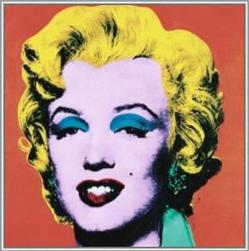Pop Art definition
Pop Art was characterized with a focus on popular culture that expanded upon the prosperity of the post-war society in the 1950s and 1960s. The movement started in the USA but also expanded to England. The movement used subject matter such as comic strips, soda bottles, and soup cans and turned them into icons of the day. The movement was actually a child of Dadaism; it sarcastically made fun of the art world through its use of urban images, products from grocery stores, and the mass media. Pop Art was about communicating how these objects are themselves works of art. Anything seemed game to include in a Pop artist’s artwork. Andy Warhol brought the movement to the forefront when he made screen prints of the highly recognizable Coke bottle, Campbell soup tin, and famous Hollywood stars. By taking the techniques and methods of the commercial world, Warhol was able to make artwork that appeared machine-made and sleek. Unlike their introverted painting counterparts, Pop artists were extroverted in their sharing of their images with the public. The movement was immensely successful and played a big influence on artists and the public. Other key artists beside Warhol include Claes Oldenburg, Roy Lichtenstein, Roy Hamilton, Jasper Johns, and Robert Rauschenberg.
 Two of Andy Warhol's artworks. He used images and objects that were highly recognizable.
Two of Andy Warhol's artworks. He used images and objects that were highly recognizable.

